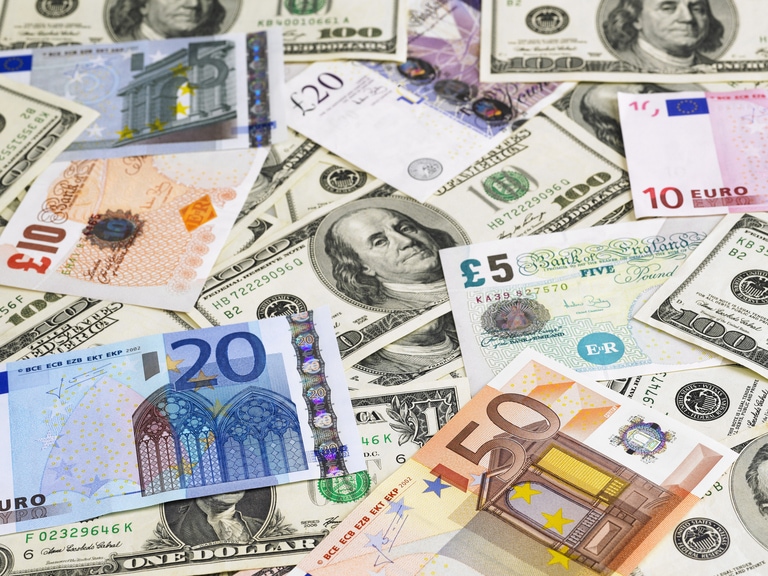After what has been a uniformly negative week, today’s US non-farm payrolls report has served to offer a brief respite to markets with a solid but not spectacular set of numbers, although the unemployment rate did see an increase from 3.5% to 3.7%.
Europe
Today’s gains have been broad based with today’s outperformers including the likes of Abrdn, which appears to be enjoying some buying interest ahead of what is likely to be its eviction from the FTSE 100 at the next reshuffle in what has been a disappointing year to date for the asset management sector.
St. James Place is also having a positive day, after the shares hit their lowest levels since December 2020 earlier this week. The energy sector is also getting a lift on the back of a rebound in oil prices, with BP leading the way, and Shell shrugging off reports that CEO Ben Van Beurden is stepping down next year, after 40 years at the company.
The DAX has been a notable strong performer, led by the auto and manufacturing sector. Today’s worst performers on the FTSE 100 have been the housebuilders on the back of a downgrade from HSBC. With the share prices of Berkeley Group, Persimmon, Taylor Wimpey and Barratt Developments already back at their post lockdown lows, and down between 30% and 50% year to date, today’s action does appear to have all the hallmarks of a 'horse stable door' moment.
HSBC has cited concerns over the cost of living, and rising interest rates on the durability of the housing market, which could result in a “plunge” in housing demand and lower prices. Judging by the share price performance seen over the last 12 months, one has to ask as to whether these concerns aren’t already priced in?
US
US markets opened higher after what can only be described as a respectable jobs report for August, which saw 315,000 jobs added. Given the negativity this week and the US Labor Day long weekend coming up, this afternoon’s numbers have helped give markets a short-term lift, and prompted an element of short-covering, bargain hunting, however you want to describe it, with the US economy continuing to look resilient, as more workers return to the jobs market.
With their share price close to the July lows, and the guidance downgrades from some of its peers Broadcom’s latest Q3 numbers had a low bar to clear, which it cleared with ease.
When the company reported in Q2, its guidance for Q3 was for revenues to rise to $8.4bn, a rise of 24% from a year ago, and profits to come in at $8.3c a share. Yesterday’s numbers surpassed those expectations with revenues of $8.46bn and profits of $9.73c a share. For Q4 revenue is expected to rise to $8.9bn, while its order book has grown to $31bn with a 50-week lead time.
FX
Today’s US non-farm ayrolls report saw the US economy add 315,000 jobs in August, while wage growth remained constant at 5.2%. Somewhat disappointingly the unemployment rate rose to 3.7% from 3.5%, however that was mainly due to a sharp rise in the participation rate from 62.1% to 62.4%, which suggests that people are returning to the workforce due to the rising cost of living. This is exactly what you want to see, and while no-one wants the unemployment rate to rise, it’s rising for the right reason, because people want to get back into work.
This has prompted a little US dollar weakness today, however this is probably no more than profit-taking at the end of a week which has seen the greenback post 24-year peaks against the Japanese yen, and 20-year highs on the US dollar index.
This afternoon’s numbers also add to the idea that the US labour market remains tight and that a lot of these people will end up filling some of the 11.2m vacancies that are waiting to be filled in the US economy. It also means that the Federal Reserve is likely to press ahead with a 75bps rate hike when they next meet in September.
The rebound in crude oil prices is also seeing the Norwegian Krone get an uplift at the end of a disappointing week. The euro is also getting a lift ahead of next week's ECB rate meeting, where it is expected we could see a 75bps rate rise.
Crude oil prices have continued to find support just above the $90 a barrel level which acted as a floor in August. This has come about through continued speculation that OPEC+ will look at cutting output if prices fall below the $90 a barrel level. The Saudi oil minister has previously gone on the record as saying that this could be an option if the demand outlook deteriorates further. This seems unlikely even with a slowing Chinese economy and the rolling covid lockdowns which are likely to weigh on the outlook. Oil inventory levels are still at low levels, which means even in the event of lower demand countries are likely to rebuild these in order to take advantage of lower prices, and build up their buffers.
Gold prices have rebounded modestly from just above the July lows, as a weaker US dollar and a decline in yields helps put a short-term floor under prices as we head into a long weekend for US markets.






